Can You Keep A Lizard As A Pet? Absolutely! At PETS.EDU.VN, we believe that owning a reptile can be an enriching journey, and understanding proper lizard care is the first step toward a successful pet ownership experience. Delve into the fascinating world of lizard ownership, covering everything from habitat setup to dietary needs and health considerations, ensuring that you are fully equipped to provide a loving and thriving home for your scaly companion, explore the joys of reptile keeping, responsible pet ownership, and exotic pet care.
1. Understanding the Allure of Lizard Keeping
Lizards captivate with their diverse appearances and behaviors, making them fascinating companions. Before bringing one home, it’s important to understand the commitment involved. Owning a lizard is more than a novelty; it requires dedication, research, and creating the right environment. According to the American Veterinary Medical Association, responsible pet ownership involves understanding the specific needs of your chosen species.
1.1. Why Choose a Lizard?
Lizards offer unique companionship:
- Variety: From the small gecko to the larger iguana, there’s a lizard for almost every lifestyle.
- Low Allergen: Unlike furry pets, lizards produce minimal allergens.
- Quiet Companions: Lizards are generally quiet, making them ideal for apartment living.
1.2. Essential Considerations Before Getting a Lizard
Consider these factors to ensure a good fit:
- Lifespan: Some lizards can live for decades. Are you prepared for a long-term commitment?
- Space: Different species require different enclosure sizes.
- Diet: Lizards have specific dietary needs, ranging from insects to plants.
- Cost: Setting up and maintaining a proper habitat can be expensive.
- Legality: Ensure it is legal to own your desired species in your area.
2. Selecting the Right Lizard Species
Choosing the right lizard is critical for a successful pet-owner relationship. Not all lizards are created equal; some are better suited for beginners than others. Consider your experience level, available space, and lifestyle when making your decision.
2.1. Top Beginner-Friendly Lizards
These species are known for their docile nature and relatively simple care requirements:
| Species | Size | Temperament | Diet | Enclosure Size (Minimum) |
|---|---|---|---|---|
| Bearded Dragon | 18-24 inches | Docile, enjoys handling | Insects, leafy greens, vegetables | 40-gallon tank |
| Leopard Gecko | 7-9 inches | Docile, easy to handle | Insects | 20-gallon tank |
| Crested Gecko | 6-8 inches | Docile, arboreal | Gecko diet powder, insects, fruit | 18x18x24 inch terrarium |
| Blue-Tongue Skink | 18-24 inches | Docile, curious | Insects, vegetables, fruits | 40-gallon tank |
| African Fat-Tailed Gecko | 7-9 inches | Docile, nocturnal | Insects | 20-gallon tank |
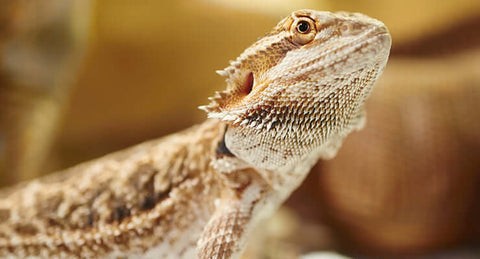
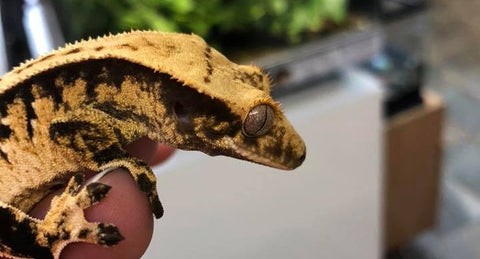
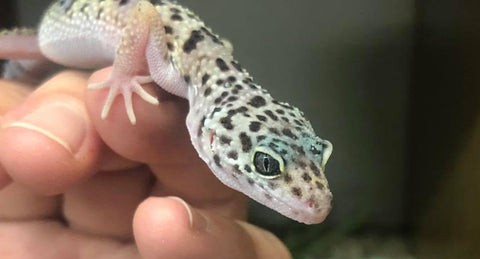
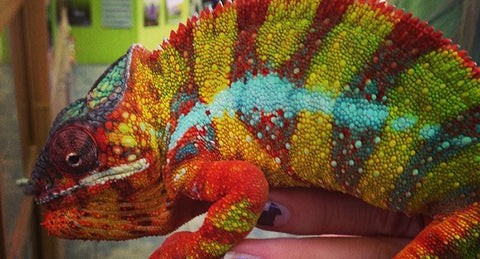
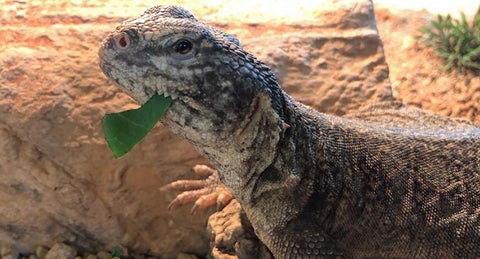
2.2. Lizards for Experienced Keepers
These species require more specialized care and are best suited for those with experience:
- Chameleons: Require precise temperature and humidity control, as well as specialized feeding techniques.
- Iguanas: Need large enclosures, specific diets, and can be aggressive if not properly socialized.
- Monitors: These intelligent lizards require very large enclosures, specialized diets, and can be potentially dangerous.
- Uromastyx: Need high temperatures, specific diets consisting of seeds and plants, and well-ventilated enclosures.
- Water Dragons: Demand a semi-aquatic environment with both land and water, high humidity, and a varied diet.
2.3. Researching Your Chosen Species
Once you’ve narrowed down your choices, conduct thorough research on your chosen species. PETS.EDU.VN offers in-depth care guides for various lizard species. The more you know, the better prepared you’ll be to provide the right care.
3. Creating the Perfect Lizard Habitat
A proper habitat is essential for your lizard’s health and well-being. It should mimic their natural environment as closely as possible.
3.1. Enclosure Size and Type
The size of your lizard’s enclosure is determined by their adult size and activity level. A general rule is that the enclosure should be at least twice the lizard’s length and wide enough for them to turn around comfortably.
- Glass Terrariums: Ideal for maintaining humidity and providing good visibility.
- PVC Enclosures: Lightweight, easy to clean, and good for maintaining temperature.
- Screen Enclosures: Suitable for species that require high ventilation and lower humidity.
3.2. Temperature and Humidity
Maintaining the correct temperature and humidity is crucial for your lizard’s health. Reptiles are ectothermic, meaning they rely on external sources to regulate their body temperature.
- Basking Spot: Provide a basking spot with a temperature gradient that allows your lizard to regulate their body temperature.
- Heating Elements: Use basking bulbs, ceramic heat emitters, or heat mats to provide warmth.
- Thermometers and Hygrometers: Monitor temperature and humidity levels regularly.
- Humidity Control: Use misters, humidifiers, or a water bowl to maintain appropriate humidity levels.
3.3. Lighting: UVB and UVA
UVB and UVA lighting are essential for your lizard’s health. UVB lighting helps them synthesize vitamin D3, which is necessary for calcium absorption and bone health. UVA lighting promotes natural behaviors, such as feeding and breeding.
- UVB Bulbs: Choose a UVB bulb appropriate for your lizard’s species.
- UVA Bulbs: Can be combined with UVB bulbs or used separately.
- Lighting Schedule: Maintain a consistent lighting schedule, typically 12 hours of light and 12 hours of darkness.
3.4. Substrate and Décor
The substrate is the material that lines the bottom of the enclosure. Choose a substrate that is safe for your lizard and easy to clean. Décor provides hiding places, climbing opportunities, and enrichment.
- Substrate Options: Paper towels, reptile carpet, sand, soil, or a bioactive substrate mix.
- Hides: Provide multiple hiding places where your lizard can feel secure.
- Climbing Branches: Allow your lizard to climb and exercise.
- Plants: Add a natural touch to the enclosure and provide additional hiding places. Ensure plants are non-toxic.
4. Nutrition: Feeding Your Lizard
A proper diet is essential for your lizard’s health. Different species have different dietary needs, so it’s important to research the specific requirements of your chosen lizard.
4.1. Insectivores
Insectivores primarily eat insects. Common insectivores include leopard geckos, crested geckos, and bearded dragons (as juveniles).
- Feeder Insects: Crickets, mealworms, superworms, dubia roaches, and black soldier fly larvae.
- Gut Loading: Feed your feeder insects a nutritious diet before offering them to your lizard.
- Supplementation: Dust feeder insects with calcium and vitamin D3 supplements.
4.2. Herbivores
Herbivores primarily eat plants. Common herbivorous lizards include green iguanas and uromastyx.
- Leafy Greens: Collard greens, mustard greens, dandelion greens, and turnip greens.
- Vegetables: Squash, carrots, sweet potatoes, and beans.
- Fruits: Berries, melon, papaya, and mango (in moderation).
- Supplementation: Provide a calcium supplement.
4.3. Omnivores
Omnivores eat both insects and plants. Bearded dragons are a common example of an omnivorous lizard.
- Variety: Offer a varied diet of insects, leafy greens, vegetables, and fruits.
- Proportions: Adjust the proportions of insects and plants based on your lizard’s age and needs.
- Supplementation: Supplement with calcium and vitamin D3.
4.4. Feeding Schedule and Techniques
Establish a consistent feeding schedule for your lizard. The frequency and amount of food will depend on their age, size, and species.
- Juveniles: Feed daily.
- Adults: Feed every other day or every third day.
- Proper Size: Offer food items that are no larger than the space between your lizard’s eyes.
- Observation: Monitor your lizard’s weight and adjust their diet accordingly.
5. Health and Wellness: Keeping Your Lizard Healthy
Regular health checks and preventative care are essential for keeping your lizard healthy.
5.1. Common Lizard Health Issues
Be aware of common health issues that can affect lizards:
- Metabolic Bone Disease (MBD): Caused by calcium deficiency, often due to inadequate UVB lighting or dietary imbalance.
- Respiratory Infections: Caused by improper temperature or humidity levels.
- Parasites: Internal and external parasites can cause a variety of health problems.
- Skin Shedding Problems (Dysecdysis): Caused by inadequate humidity or improper diet.
- Impaction: Caused by ingestion of indigestible materials or dehydration.
5.2. Signs of a Healthy Lizard
Know what to look for to ensure your lizard is healthy:
- Alert and Active: A healthy lizard will be alert and active during their active periods.
- Clear Eyes and Nostrils: No discharge or swelling.
- Healthy Skin: No lesions, bumps, or abnormal shedding.
- Good Appetite: Eating regularly and maintaining a healthy weight.
- Normal Stool: Firm and well-formed stool.
5.3. Regular Veterinary Check-ups
Find a qualified veterinarian who specializes in reptiles. Regular check-ups can help detect and prevent health problems early.
- Annual Exams: Schedule annual check-ups for your lizard.
- Fecal Exams: Have your veterinarian check your lizard’s stool for parasites.
- Quarantine: Quarantine new lizards before introducing them to existing pets.
5.4. Proper Hygiene and Sanitation
Maintain a clean environment to prevent the spread of disease:
- Daily Spot Cleaning: Remove waste and uneaten food daily.
- Regular Disinfecting: Disinfect the enclosure and accessories regularly with a reptile-safe disinfectant.
- Hand Washing: Always wash your hands before and after handling your lizard or their enclosure.
6. Safe Handling and Interaction
Handling your lizard can be a rewarding experience, but it’s important to do it safely and gently.
6.1. Building Trust
- Start Slow: Begin with short, gentle interactions.
- Positive Reinforcement: Offer treats or praise when your lizard is calm and relaxed.
- Avoid Sudden Movements: Approach your lizard slowly and avoid sudden movements that could startle them.
6.2. Proper Handling Techniques
- Support the Body: Always support your lizard’s body when handling them.
- Avoid Restricting Movement: Allow your lizard to move freely without feeling restricted.
- Wash Your Hands: Always wash your hands before and after handling your lizard.
6.3. Recognizing Stress Signals
- Darkening of Color: Some lizards will darken in color when stressed.
- Tail Dropping: Some lizards may drop their tails when stressed.
- Hissing or Biting: These are signs that your lizard is feeling threatened.
7. Enrichment and Mental Stimulation
Lizards need mental stimulation to thrive. Providing enrichment can help prevent boredom and promote natural behaviors.
7.1. Environmental Enrichment
- Variety of Décor: Provide a variety of décor, such as climbing branches, rocks, and plants.
- Rearrange the Enclosure: Rearrange the enclosure regularly to provide new challenges and exploration opportunities.
- Hiding Places: Offer multiple hiding places where your lizard can feel secure.
7.2. Food Enrichment
- Live Feeding: Allow your lizard to hunt for live insects.
- Puzzle Feeders: Use puzzle feeders to make mealtime more challenging and engaging.
- Scatter Feeding: Scatter food around the enclosure to encourage foraging behavior.
7.3. Social Enrichment
- Supervise Interactions: Supervise interactions with other pets or family members.
- Mirror Training: Introduce a mirror to allow your lizard to observe themselves.
8. Ethical Considerations
It’s important to consider the ethical implications of owning a lizard.
8.1. Sourcing Your Lizard
- Reputable Breeders: Purchase your lizard from a reputable breeder who prioritizes animal welfare.
- Avoid Wild-Caught Lizards: Wild-caught lizards may be stressed, unhealthy, and contribute to the decline of wild populations.
- Adoption: Consider adopting a lizard from a rescue organization.
8.2. Conservation
- Support Conservation Efforts: Support organizations that are working to protect lizards and their habitats.
- Responsible Ownership: Be a responsible pet owner and ensure that your lizard does not escape into the wild.
9. Lizard Ownership and Children
Lizards can be great pets for families with children, but it’s important to teach children how to interact with them safely and respectfully.
9.1. Supervision
- Always Supervise: Always supervise children when they are handling or interacting with lizards.
- Teach Gentle Handling: Teach children how to handle lizards gently and avoid squeezing or dropping them.
9.2. Hygiene
- Hand Washing: Teach children to wash their hands thoroughly after handling lizards or their enclosures.
- Salmonella Awareness: Educate children about the risk of Salmonella and how to prevent it.
9.3. Education
- Learn About Lizards: Encourage children to learn about lizards and their care requirements.
- Promote Respect: Teach children to respect lizards as living creatures and to treat them with kindness and compassion.
10. Lizard FAQs
Here are some frequently asked questions about keeping lizards as pets:
- What are the best lizards for beginners?
Bearded dragons, leopard geckos, and crested geckos are excellent choices for beginners due to their docile nature and relatively simple care requirements. - How long do lizards live?
The lifespan of lizards varies by species. Some can live for only a few years, while others can live for decades. - What do lizards eat?
Lizards have different dietary needs depending on their species. Some are insectivores, some are herbivores, and some are omnivores. - Do lizards need UVB lighting?
Yes, UVB lighting is essential for most lizards to synthesize vitamin D3, which is necessary for calcium absorption and bone health. - How often should I clean my lizard’s enclosure?
You should spot-clean your lizard’s enclosure daily and do a thorough cleaning and disinfecting regularly. - Can lizards carry Salmonella?
Yes, lizards can carry Salmonella bacteria. It’s important to wash your hands thoroughly after handling lizards or their enclosures. - How do I know if my lizard is sick?
Signs of illness in lizards include lethargy, loss of appetite, discharge from the eyes or nostrils, abnormal skin shedding, and changes in stool. - Do lizards need to see a veterinarian?
Yes, lizards should have regular check-ups with a qualified veterinarian who specializes in reptiles. - Can I keep multiple lizards together?
Some lizard species can be kept together, but it’s important to research the specific requirements of your chosen species and ensure that they have enough space and resources to avoid conflict. - How do I handle a lizard safely?
Handle lizards gently, supporting their body and avoiding sudden movements that could startle them.
Conclusion: The Rewarding World of Lizard Keeping
Keeping a lizard as a pet can be an incredibly rewarding experience. By understanding their specific needs and providing proper care, you can enjoy the unique companionship of these fascinating creatures for years to come. Remember, PETS.EDU.VN is here to support you on your lizard-keeping journey with expert advice, detailed care guides, and a passionate community of reptile enthusiasts.
Ready to start your adventure in lizard ownership? Visit PETS.EDU.VN today for more in-depth information on choosing, caring for, and enjoying your new scaly friend. For personalized advice and support, contact us at 789 Paw Lane, Petville, CA 91234, United States. Whatsapp: +1 555-987-6543.
By understanding their specific needs and providing proper care, you can enjoy the unique companionship of these fascinating creatures for years to come. Remember, PETS.EDU.VN is here to support you on your lizard-keeping journey with expert advice, detailed care guides, and a passionate community of reptile enthusiasts.
Learn More About Lizard Care at PETS.EDU.VN
At PETS.EDU.VN, we’re dedicated to providing comprehensive information and resources to help you become the best lizard owner possible. Whether you’re curious about bioactive terrariums, reptile-safe plants, or leopard gecko care, we have the expertise to guide you.
- Expert Articles: Dive into our extensive library of articles covering everything from basic care to advanced husbandry techniques.
- Species Profiles: Get detailed information on specific lizard species, including their unique needs and behaviors.
- Community Forum: Connect with other lizard enthusiasts, share your experiences, and get answers to your questions.
Join the PETS.EDU.VN community today and unlock a world of knowledge and support for your lizard-keeping journey. Let’s create thriving habitats and happy lives for our scaly companions together.
Contact Us:
For personalized advice and support, contact us at:
Address: 789 Paw Lane, Petville, CA 91234, United States
WhatsApp: +1 555-987-6543
Website: PETS.EDU.VN
Additional Resources
For further information and resources on lizard care, check out these reputable organizations:
- Association of Reptilian and Amphibian Veterinarians (ARAV): Provides a directory of qualified reptile veterinarians.
- International Herpetological Society (IHS): Offers educational resources and promotes reptile conservation.
- The Reptile Database: A comprehensive online resource for reptile information.
By combining the expertise of PETS.EDU.VN with these valuable resources, you can ensure that you have the knowledge and support you need to provide the best possible care for your lizard.
Additional FAQs
-
Are lizards expensive pets to keep?
The initial setup costs can be significant, including the enclosure, lighting, heating, and substrate. However, ongoing costs such as food and supplements are generally manageable, depending on the species. -
How do I handle a lizard that doesn’t like to be held?
Start by offering treats from your hand to build trust. Gradually increase interaction by gently touching the lizard. If the lizard continues to show signs of stress, limit handling to essential care tasks only. -
What do I do if my lizard stops eating?
Check the enclosure temperature and humidity to ensure they are within the correct range for the species. Offer a variety of food items and consider a vet visit to rule out any underlying health issues. -
How often should I change the water in my lizard’s enclosure?
Change the water daily to prevent bacterial growth and ensure your lizard has access to fresh, clean water. -
Do lizards need company?
Some lizards are solitary animals and prefer to live alone. Others can be kept in groups, but it’s essential to research the specific needs of your chosen species to avoid aggression or competition for resources. -
How do I know if my lizard is shedding properly?
Healthy shedding involves the skin coming off in large pieces. If the skin is coming off in small pieces or not at all, it could indicate a humidity problem or a health issue. -
What are some safe plants to put in my lizard’s enclosure?
Some safe plants include succulents, air plants, and certain ferns. Always research to make sure the plants are non-toxic to your specific species. -
Can I take my lizard outside?
Taking your lizard outside can be beneficial for UVB exposure, but it’s crucial to supervise them closely and ensure they are in a secure enclosure to prevent escape. -
How do I travel with my lizard?
Use a secure carrier with proper ventilation and temperature control. Provide a hide and a source of water. Avoid exposing the lizard to extreme temperatures. -
What should I do if I can no longer care for my lizard?
Contact a local reptile rescue organization or a reputable breeder to find a suitable new home for your lizard. Never release a pet lizard into the wild, as it can harm native ecosystems.
PETS.EDU.VN believes the key to successful lizard keeping lies in education, preparation, and dedication. With the right knowledge and commitment, you can provide a thriving and fulfilling life for your scaly companion. Remember, we’re here to support you every step of the way. Contact us today for personalized advice and guidance!
Remember, thorough research and preparation are key to providing a happy and healthy life for your lizard. For more in-depth information and guidance, visit pets.edu.vn – your trusted resource for all things pet-related!